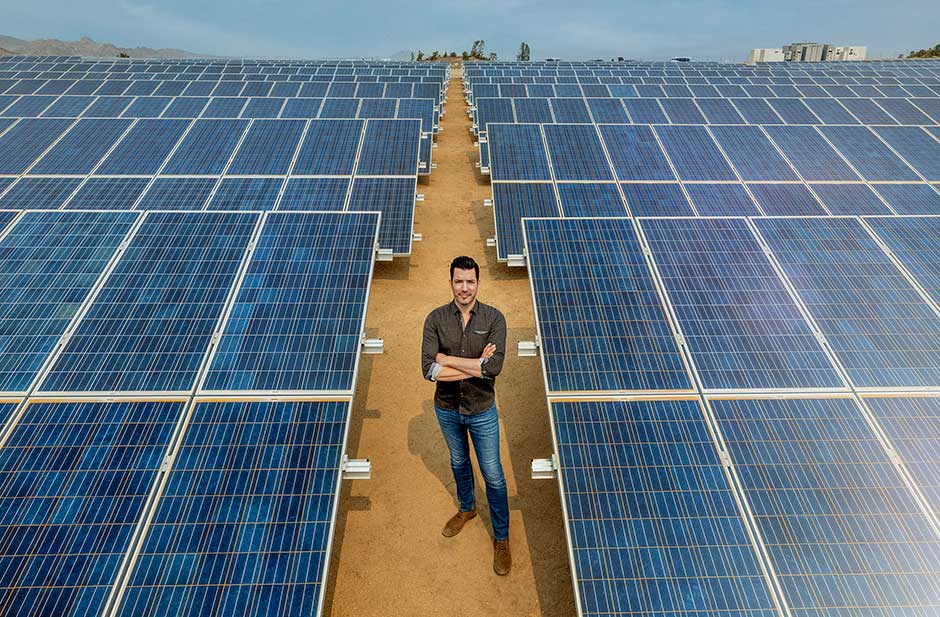How Solar Power Will Change Our World
If you’re considering solar power, now’s your moment.

Solar power has a reputation for being for the one percent—because it used to be! In 2010, the average residential system ran more than $50,000. A lot has changed and the initial price is now closer to $16,000 to $21,000, with the average user saving $1,500 a year on electricity bills. Like electric cars, solar once felt exotic and futuristic, but now it’s everywhere.
And while it’s still pricier than fossil fuel–powered electricity, “It shouldn’t be!” says our own Jonathan Scott. “We should have incentives at the federal level that make clean energy affordable for everybody and really take our homes into the 21st century.
A ‘smart’ home isn’t just a wired home, but a clean-energy home that saves you money and reduces your carbon footprint.” If he sounds passionate about solar power, it’s because he is: He made the film Jonathan Scott’s Power Trip about it, earning him a PBS Independent Lens award. Incentives do exist, but they depend on your state and vary widely. In areas that offer tax credits, your investment can pay for itself quickly.
But the incentives may not last, says Isabelle Arnheim, Environmental Sustainability Lead for Drew and Jonathan’s company, Scott Brothers Global. “Costs dropped dramatically as the tech has grown more scalable,” she says. “The lower price tag means it makes less sense to pay people to switch to solar, so state tax credits may be reduced or eliminated in the next few years.” Meaning now is the sweet spot for getting in.
Recent tech advances are also making solar more worth it. As it works now, most homeowners with residential panels can use the power they generate only while the sun is out and can’t store excess energy, so it gets sold back to the power company. Then at night, when there’s no sun on the panels, the homeowner buys energy back from the power company.
“The next frontier of making solar more useful and affordable is storage,” says Arnheim. That means syncing your panels with a rechargeable home battery—like Tesla’s Powerwall or LG’s RESU—to keep that extra energy to use overnight or during a power outage.
The solar charged–battery setup is great for homeowners who want to reduce their fossil fuel consumption and for those who want to be more disaster-ready as we face more frequent and enduring climate emergencies (like the dangerous week-long outages during 2021’s deep freeze in Texas, or the wildfire shutdowns in the West).
Jonathan’s new home has solar panels, a battery wall, and Span, an electrical panel that allows you to monitor
and distribute electricity loads through an app. That means overnight or during an outage, you can categorize powered items as “must have,” “nice to have,” or “don’t need,” monitor how long you can run them on your current battery level, and adjust them on the fly.
So whether your priority is keeping your fridge or air conditioner running, keeping your outlets powered so you can charge your laptop and cell phone, or juicing up your electric vehicle to get out of town, you’ll be able to weather the storm, literally or figuratively. Now that’s smart. Visit powertriptruth.com to learn more.
By Sarah Z. Wexler | Photography by Dennys Ilic



